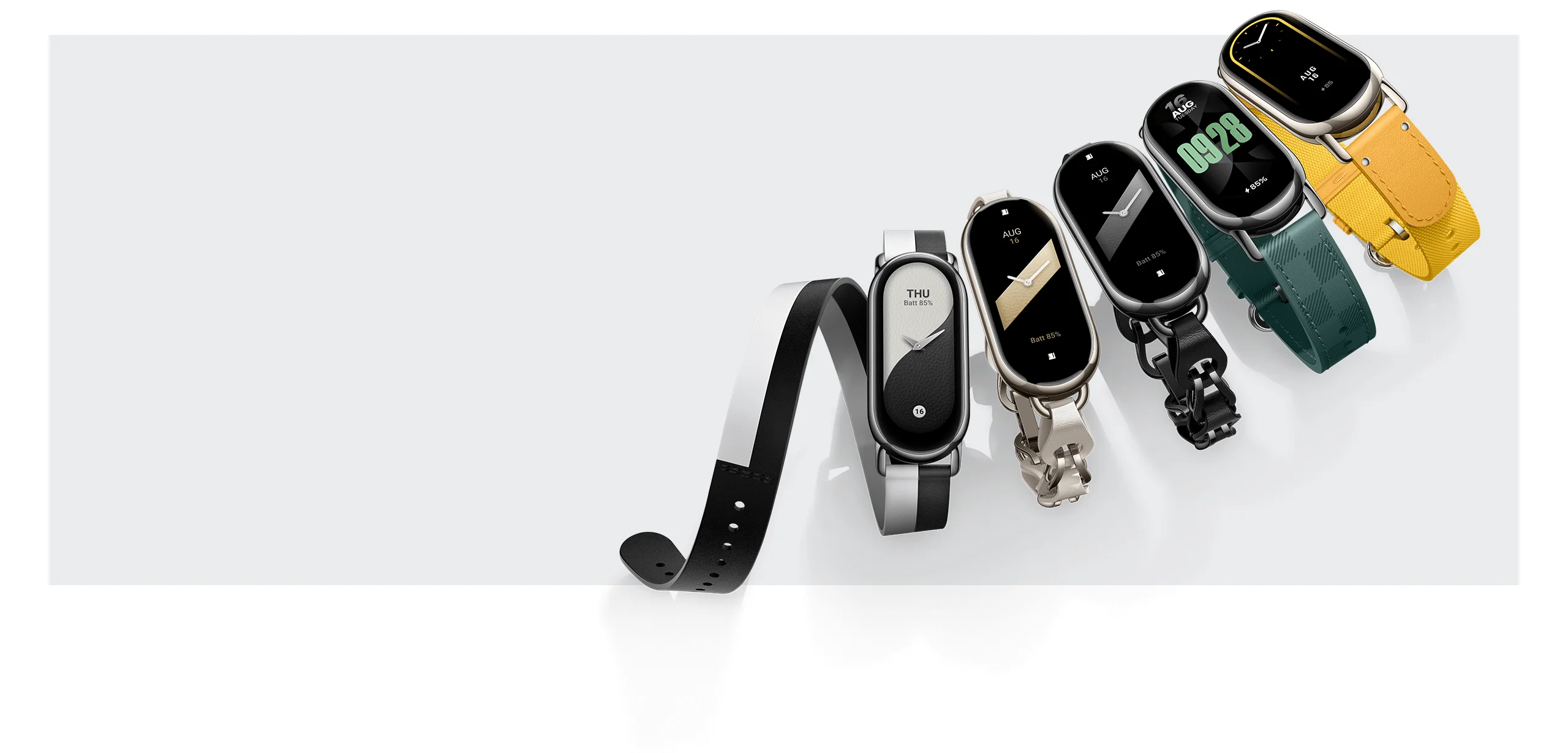In a world where wearable technology is constantly evolving, the Xiaomi Mi Band series has consistently provided excellent value for money. The Mi Band 8 is no exception, and while it maintains a familiar price point and accessibility, there are some notable changes worth discussing.
Design and Build Quality
The Mi Band 8 continues Xiaomi’s tradition of offering stylish and functional wearables at a competitive price. This time, however, there’s a refreshing new choice of colors. The device is now available in both classic black and a sophisticated champagne gold, the latter of which I opted for this time around. The gold color adds a touch of elegance, and the overall design of the product feels more refined than previous iterations.
The unboxing experience is straightforward with a white box that houses the Mi Band 8, a new square-shaped charging cable, and a manual. The shift from the round to the square charging cable is minor but notable; personally, I found the round design to be a bit more secure, though the difference is not drastic. One thing to note is that while the Mi Band 7 and 6 share compatible chargers, the Mi Band 8’s charger is not interchangeable with those models.
Display and Performance
When comparing the Mi Band 8 to its predecessor, the Mi Band 7, the overall design hasn’t drastically changed. The device still weighs approximately 26 grams with the strap, which is only 1 gram more than the Mi Band 7. The display size remains at 1.6 inches, featuring an AMOLED screen with a resolution of 192 x 490 pixels and 326 ppi. However, there are a few key improvements:
- Brightness: The maximum brightness has increased to 600 nits, a 100 nit boost from the Mi Band 7. While the difference may not be immediately noticeable in casual use, it becomes apparent when comparing both devices side by side.
- Refresh Rate: The Mi Band 8 now boasts a 60Hz refresh rate, which significantly enhances the fluidity of screen transitions and overall responsiveness. This upgrade addresses some lag issues present in the Mi Band 7, making for a much smoother user experience.
- Auto Brightness Sensor: A new addition is the auto brightness sensor, which adjusts the screen brightness based on ambient light conditions. This feature eliminates the need for manual adjustments in different lighting environments, enhancing usability in various settings.
Usability Enhancements
The Mi Band 8 introduces several enhancements that improve the user experience:
- AOD (Always-On Display): The transition between AOD screens and regular usage is now seamless, with no noticeable delay. This was a point of frustration with the Mi Band 7, and the improvement here is quite gratifying.
- Strap and Design: The strap design has also seen improvements. It is now easier to detach and reattach, with a more secure fit and less hassle compared to previous models. This change makes swapping out straps a breeze, adding to the device’s versatility.
Features and Functionality
While the Mi Band 8 retains many of the core features of its predecessor, such as fitness tracking for oxygen saturation, stress levels, heart rate, and sleep, there are a few notable changes:
- App Compatibility: The Mi Band 8 can only be used with the Mi Fitness app, unlike the Mi Band 7, which supported both Mi Fitness and the Zepp Life app. This shift might limit some users who preferred the flexibility of using multiple apps.
- Fitness Modes: The number of workout modes has increased to 150, a 30-mode upgrade from the Mi Band 7. Although this expansion is impressive, its practical impact may be limited for users who do not require extensive workout tracking.
- Accessories: New to the Mi Band 8 are additional accessories, such as the pebble mode that clips onto shoes for more precise running metrics. This feature is available for purchase separately and might appeal to serious athletes.
Performance and Battery Life
The Mi Band 8 maintains a battery life of around 16 days with typical use and 6 days with AOD enabled. The battery capacity is slightly increased to 190mAh, providing a marginal boost over the Mi Band 7. However, real-world usage suggests a battery life of around 4 days with AOD always on and notifications enabled.
Connectivity and Compatibility
The Mi Band 8’s connectivity has shown some instability compared to the Mi Band 7. Frequent disconnections and the need for manual synchronization with the app may be a concern for some users. Additionally, there are notable differences between iOS and Android experiences:
- Notification Icons: On Android, notification icons are displayed accurately, while on iOS, they are often represented with generic icons, which can be less informative.
- Call Handling: Android users can set up call rejection messages, which is not available on iOS.
- Music Controls: The Mi Band 8 offers a streamlined music control interface on Android, which is not as effective on iOS.
- Watch Face Customization: Custom watch faces are easier to manage on Android, while iOS users face more restrictions.
Conclusion
Overall, the Mi Band 8 is a worthy upgrade from the Mi Band 7, with improvements in display technology, refresh rate, and usability. While there are some drawbacks, particularly in terms of app compatibility and connectivity issues, the Mi Band 8 continues to offer excellent value for its price. It is a solid choice for those looking to upgrade from earlier models, especially for everyday use and fitness tracking.
